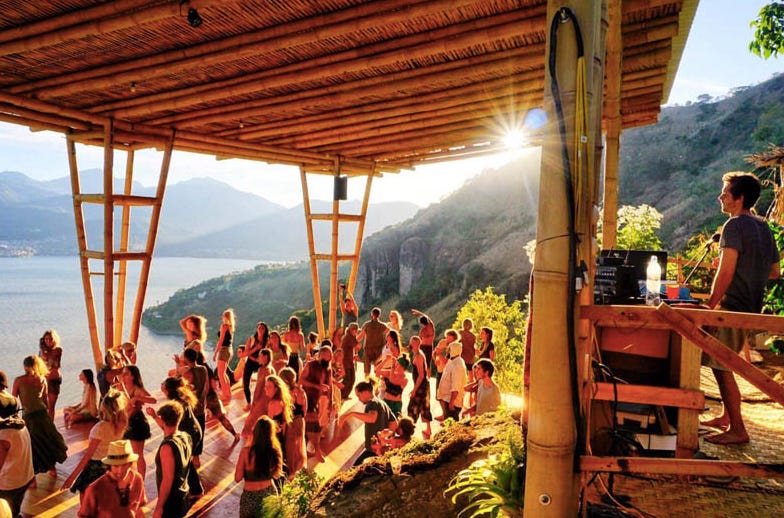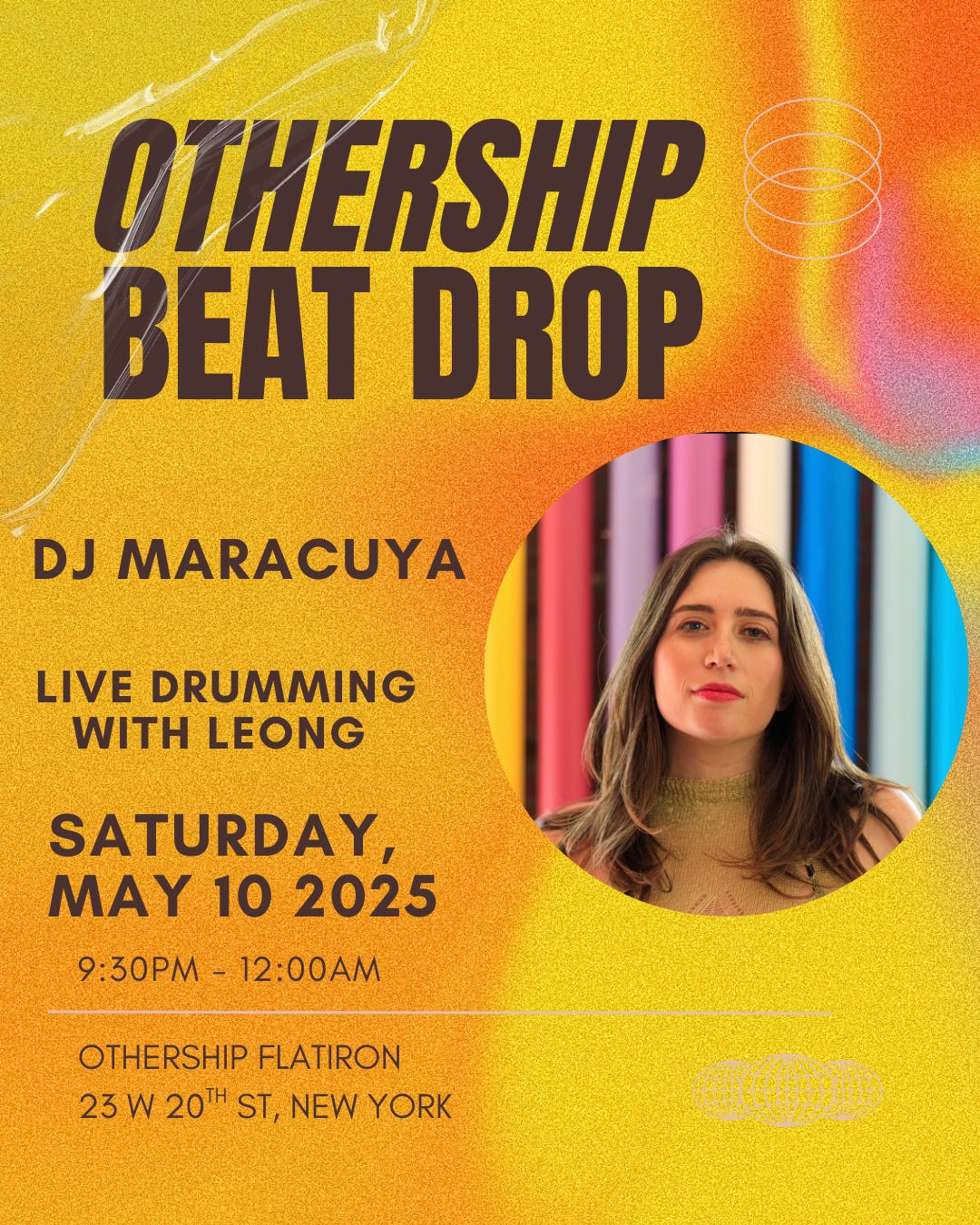Why Ecstatic Dance Is My Favorite Form of Movement
On learning to connect with my body in a deeper way.
I first discovered ecstatic dance by accident.
I was at a music festival in Uvita, Costa Rica, 5 years ago, and in the late afternoon, I came upon a group of people dancing underneath a large outdoor tent. I had never seen anyone dance like this in my life.
No one was moving in ways you’d normally expect on a dance floor. People just seemed to be flowing in their bodies in a way that felt right to them. Some were jumping up and down, while others were crawling on the floor. Some people were dancing with others, and some were moving completely on their own. But the one thing they all had in common was that their dancing looked natural and primal.
I started to join them, and my friend, Amanda, danced along with me. When it was over, she turned to me. “I have never seen you this happy,” she said.
And it was true. Something opened up for me that day. I found a way to express myself and move my body in a way that felt natural and true, and I was overcome with joy.
It was years before I stumbled upon ecstatic dance again, this time at a dance studio in Brooklyn, NY. Again, I was overwhelmed by the feeling of openness it created. It’s a feeling that I struggle to grasp in my day-to-day life.
Before finding ecstatic dance, I was struggling with my multiple sclerosis (MS), as well as uveitis, another chronic illness. I had turned to meditation for peace and stillness, but I couldn’t quiet my thoughts. I was in a state of emergency with my health, and it was hard to want to feel present in my body when my body was in pain. It was hard to sit with my thoughts when my thoughts turned anxious and negative.
Still, I continued to pursue meditation techniques because I thought it would be the only way to find a sense of calm when dealing with my unpredictable health conditions. I stayed in monasteries in Thailand and tried my best to practice a form of meditation that worked for me. Sometimes, it worked, but it always felt like I needed more.
And then, I came back to ecstatic dance. This time, I knew how to seek it out. While I was in Southeast Asia, I looked for classes near me and started going regularly. And what I found changed my life.
Connecting with my body
Having lived with chronic illness for the past 10 years, I had become afraid of my body. I was scared of the pain it caused me, so I tried to avoid it. But through ecstatic dance, I connected to my body in a way I never had before.
Ecstatic dance encourages you not to dance for anyone but yourself, to listen to the music, and to let that guide you. In practicing this form of movement, I was able to shut out any negative thoughts and connect deeply to the sensations of my body and my own intuition.
I started to feel more grounded by letting my body lead my actions rather than my mind. I began to pay more attention to how amazing the other, often neglected, parts of my body could be — like the power of my feet in carrying me through life each day. After dancing, I felt such an immense gratitude for my body and the ways I could turn to it for guidance.
Suddenly, dance gave me what years of attempts with meditation never did: a deeply powerful clarity that I no longer needed to be afraid of my body but instead could embrace it.
The accessibility of ecstatic dance
One of my favorite things about ecstatic dance is that it’s accessible to anyone. People of all ability levels are welcome, including those who use wheelchairs and other mobility aids. Everyone dances at their own pace and how they’re able to.
If you want to sit and take a break, there are always calm, cushioned areas set up next to the dance floor, where you can rest, chat with others, meditate, or do whatever you need to do to feel good in your body. Ecstatic dance is all about listening to yourself rather than keeping up with others.
While other movement classes can sometimes feel alienating, in ecstatic dance classes, no one is watching to make sure you’re following instructions, and you can be as involved as you’d like to be.
The rules of ecstatic dance
If you’ve never tried ecstatic dance before, you might be surprised to learn there are no rules for how to dance, but there are always these same expectations:
It is a completely sober event, so no substances are allowed.
No talking is allowed on the dance floor so that you can be more present with yourself and others. It allows you to explore communicating through movement rather than through words.
No phones are allowed, also to promote this environment of presence.
No shoes are allowed. That’s right, this means everyone is dancing barefoot.
Consent is key. Even though there is no talking, there is always an understood agreement that if you don’t want to dance with someone, you can simply give them a friendly nod and move on, and there will be no hard feelings.
How to find an ecstatic dance near you
Ecstatic dance events occur all over the world. I love to travel and immediately search for the nearest ecstatic dance class in the area. It’s a great way to find community, and it’s fascinating to see how dances differ slightly in new locations. At an ecstatic dance in Paris, they had a masseuse in the corner of the dance floor giving massages per minute, so you get a quick massage and then jump back into dancing.
One great way to find an ecstatic dance is to go to EcstaticDance.org and put in your location. You can also search for dances on Instagram and Facebook.
I now lead ecstatic dance myself and incorporate journaling and meditation into my workshops.
If you’re searching for an accessible, intentional form of movement, I highly recommend trying ecstatic dance. Even if this may be out of your comfort zone, I encourage you to seek it out if you feel curious. My next one is coming up on 5/10 at Othership, a sauna space in NYC that throws sober dance parties!
It’s an excellent way to connect to your body at your own pace and feel more grounded. It also fosters an incredible sense of community. Try a class and see how it feels. You may surprise yourself!
This article originally appeared in Bezzy, a chronic condition community from Healthline.






